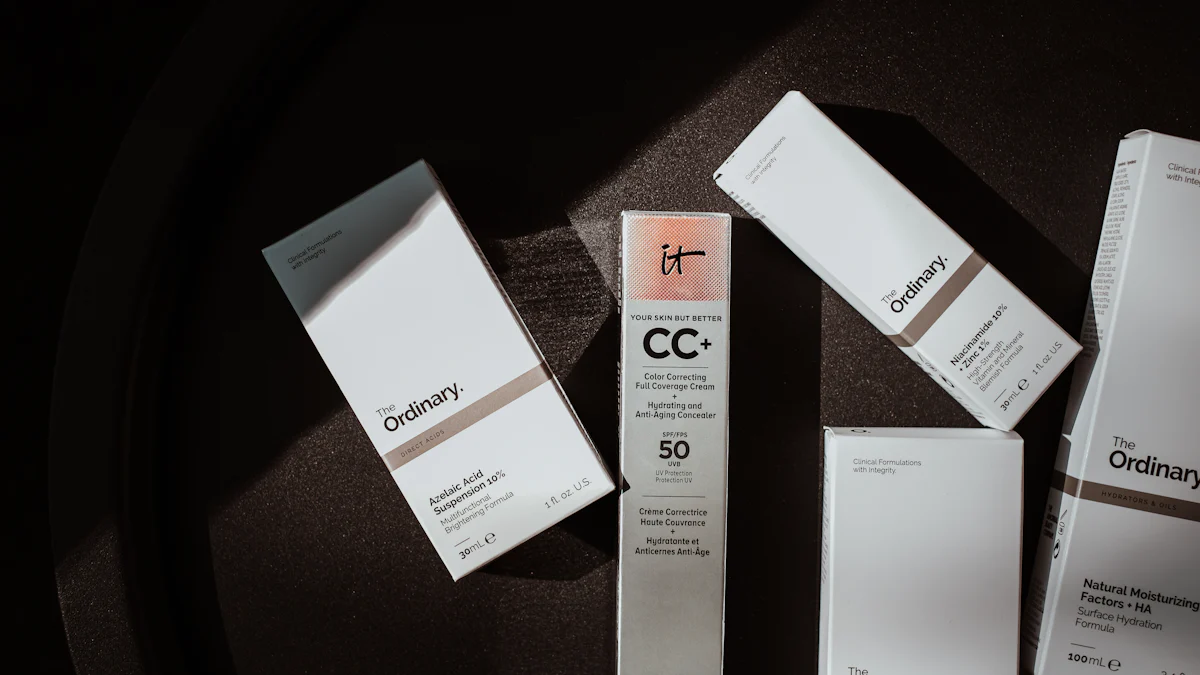
Packaging plays a crucial role in shaping brand perception. A well-executed packaging strategy can transform a product's image and elevate its market position. Packaging serves as the first point of contact between a brand and its consumers. Unique packaging designs create memorable impressions. Effective Packaging strategy can differentiate a brand from competitors. Brands must recognize the power of packaging to enhance their identity. Strategic packaging choices lead to increased brand loyalty and recognition. Businesses should explore innovative packaging strategies to stand out in the crowded marketplace.
Packaging strategies play a significant role in branding. The right packaging strategies can transform a brand's image and increase its market presence. Companies must understand how packaging influences consumer behavior and brand perception.
Color and material choices in packaging strategies impact consumer psychology. Colors evoke emotions and influence purchasing decisions. Red packaging can create excitement and urgency. Blue packaging conveys trust and reliability. Brands should select colors that align with their identity and message.
Material choices also affect consumer perceptions. Material choices appeal to environmentally conscious consumers. Luxurious materials convey premium quality. Packaging strategies should consider the target audience's preferences and values.
Packaging serves as a powerful marketing tool. Brand storytelling through packaging creates emotional connections with consumers. A compelling story on packaging can differentiate a product from competitors. Consumers remember brands that resonate with their values and experiences.
Creating a memorable unboxing experience enhances customer satisfaction. Unique and thoughtful packaging delights consumers and encourages repeat purchases. Packaging strategies should focus on delivering an exceptional unboxing experience. A positive unboxing experience leads to increased brand loyalty and word-of-mouth promotion.

A sustainable packaging strategy involves the use of eco-friendly materials. Brands can opt for biodegradable or recyclable materials. This choice reduces environmental impact. Consumers appreciate brands that prioritize sustainability. Eco-friendly packaging enhances brand reputation. A positive brand image attracts environmentally conscious consumers. Businesses should consider eco-friendly materials as a key packaging strategy.
Minimalist design represents another effective packaging strategy. Simple and clean designs appeal to modern consumers. Clutter-free packaging communicates clarity and sophistication. A minimalist approach reduces material usage. This strategy aligns with sustainability goals. Brands can convey their message more effectively through simplicity. Minimalist design creates a strong visual impact on store shelves. A clear and concise packaging strategy captures consumer attention.
Tailored packaging strategies cater to specific target audiences. Brands can customize packaging based on consumer preferences. Personalized packaging creates a unique consumer experience. This approach strengthens the emotional connection with the brand. Tailored packaging enhances consumer satisfaction. Brands can increase customer loyalty through personalization. A customized packaging strategy differentiates products in a competitive market.
Limited edition packaging offers an exclusive appeal. This packaging strategy creates a sense of urgency among consumers. Limited edition designs generate excitement and anticipation. Consumers feel special when purchasing exclusive products. Brands can boost sales through limited edition packaging. This strategy encourages repeat purchases and brand engagement. Limited edition packaging elevates a brand's perceived value.
A packaging strategy that prioritizes user-friendly design enhances customer satisfaction. Consumers appreciate easy-to-open packaging. Frustration arises from complicated packaging. A simple opening mechanism improves the user experience. Brands should consider resealable features. Resealable packaging maintains product freshness. This approach encourages repeat purchases. A focus on ease of use strengthens brand loyalty.
Reusability and multi-functionality offer significant advantages. A packaging strategy that incorporates these elements appeals to eco-conscious consumers. Reusable packaging reduces waste. Consumers value products with extended usability. Multi-functional packaging adds value. A box that transforms into storage increases consumer interest. This strategy differentiates brands in a competitive market. Enhanced functionality leads to increased brand engagement.
Product safety remains a priority for consumers. A packaging strategy that ensures protection builds trust. Durable materials prevent damage during transit. Secure packaging safeguards products from external factors. Brands must invest in quality materials. A focus on safety reduces product loss. Consumers associate reliable packaging with brand credibility. A commitment to safety enhances brand reputation.
Effective packaging strategies minimize returns and complaints. Sturdy packaging prevents product damage. Consumers appreciate receiving items in perfect condition. A reduction in returns lowers operational costs. Brands benefit from fewer customer complaints. Positive experiences lead to repeat business. A well-thought-out packaging strategy supports customer satisfaction. Businesses should prioritize protective packaging to maintain a positive brand image.
Strategic packaging plays a vital role in brand success. Effective packaging strategies elevate brand identity and consumer engagement. Businesses should adopt these strategies to enhance market presence. Innovative packaging approaches differentiate brands from competitors. Companies must embrace creativity in packaging design. A commitment to innovation fosters brand growth and loyalty. Businesses should take action to revolutionize their packaging strategies today.